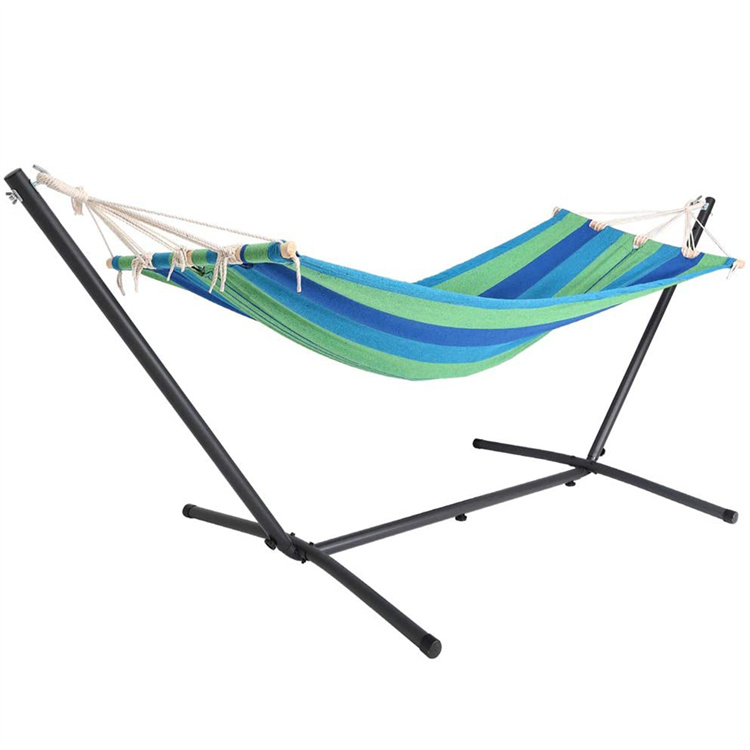The Blueprint for Bliss: Understanding How Hammock Stand Design Influences Stability and Balance in Diverse Outdoor Conditions
2024-01-02
Introduction:
A hammock gently swaying in the breeze is the epitome of outdoor relaxation, but achieving that perfect balance involves more than just finding the right spot. The design of the hammock stand plays a crucial role in determining stability and balance, especially when faced with the diverse conditions of the great outdoors. In this blog, we'll unravel the intricacies of hammock stand design and how it impacts your lounging experience in different outdoor settings.
1. Frame Structure: The Foundation of Stability
The frame structure is the backbone of any hammock stand. Generally, there are two main types: open and closed. Open designs, often seen in arc stands, provide an airy feel and ample space beneath the hammock. Closed designs, such as square or rectangular frames, prioritize a more enclosed and compact form. The choice between the two depends on personal preference and available space.
2. Material Matters: The Strength and Weight Balance
The material used in constructing the stand significantly influences its stability. Metal stands, particularly those made of steel or aluminum, offer robust support with a good balance of strength and weight. Wooden stands, while providing a natural aesthetic, need to strike a balance between weight and durability. The choice of material should align with the specific conditions of your outdoor space.
3. Height and Length: Finding the Sweet Spot
The height and length of a hammock stand are critical factors affecting both stability and balance. An optimal height ensures easy entry and exit from the hammock, while the length should match that of the hammock to avoid unnecessary strain. Taller stands may offer more clearance but could sacrifice stability, especially in windy conditions.
4. Base Shape: Stability in All Terrains
The shape of the stand's base contributes to its stability on various terrains. Tripod bases provide stability on uneven ground, making them suitable for outdoor settings with natural landscapes. Square or rectangular bases offer a solid foundation on flat surfaces. Understanding the terrain of your outdoor space will guide you in choosing the most appropriate base shape.
5. Suspension System: Balancing Flexibility and Security
The suspension system connects the hammock to the stand and directly influences its stability and balance. Chains, straps, or ropes are common components. Chains offer durability but may limit adjustability, while straps provide flexibility but require regular checks for wear and tear. The right balance between flexibility and security is crucial for a stable and safe hammock experience.
6. Weather Resistance: Standing Strong Against the Elements
Outdoor conditions can be unpredictable, so it's essential to choose a stand with adequate weather resistance. Powder-coated metal stands and naturally weather-resistant wood, like teak or cedar, are good choices. Regular maintenance, such as applying sealants or rust-resistant coatings, enhances the stand's ability to withstand various outdoor elements.
Conclusion:
As you embark on the journey to create your ideal outdoor lounging space, understanding how the design of the hammock stand impacts stability and balance is paramount. From frame structure and material choices to height, length, base shape, and suspension systems, each element plays a crucial role in crafting the perfect equilibrium for your hammock haven. By considering these factors and tailoring your choices to the specific conditions of your outdoor environment, you'll ensure a blissful and stable escape into the gentle sway of your hammock, no matter the setting.



